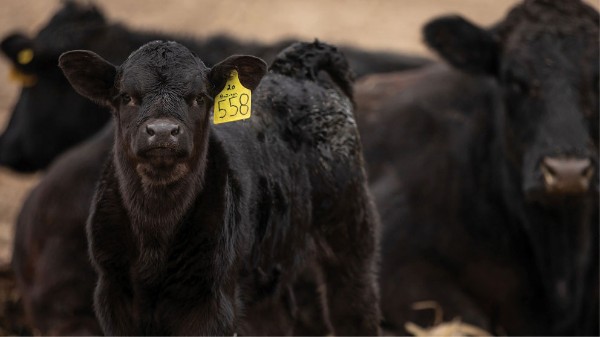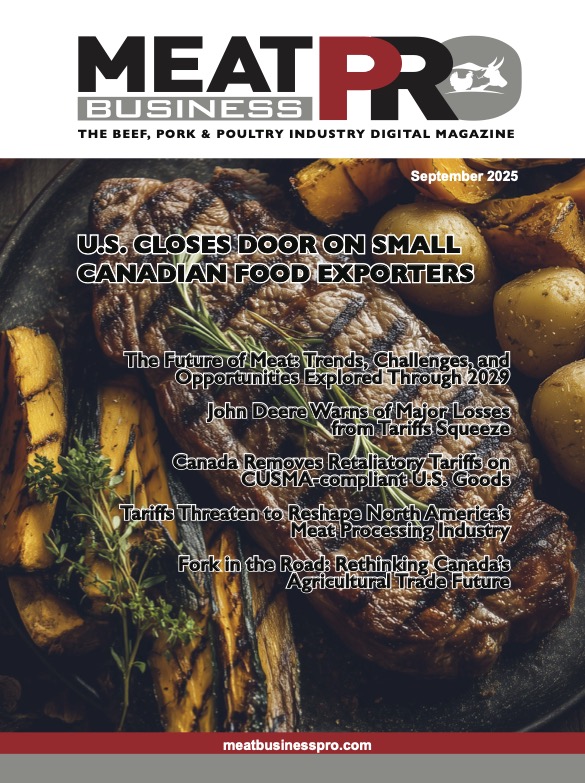FCC AgriSuccess: How two agribusinesses adapted to the unexpected

An unprecedented scope of uncertainty in the farming world dawned with 2020. But Canada’s agriculture sector isn’t new to crisis
From bovine spongiform encephalopathy (BSE) to crashing commodity prices, farmers and agribusinesses continue finding ways of getting through — and even prospering — in the face of the unexpected.
Tessa Verbeek: a diversified approach
Tessa Verbeek’s family got into the Alberta beef industry in 2005 in the middle of BSE – a risk taken with the aim of buying low and selling higher as the industry recovered. The strategy was somewhat effective, though certainly not as much as initially hoped. Alternative income sources were sought.
“We’re always trying to think of what else could be … it’s a continual conversation and looking ahead”
At the time Verbeek — who now farms and ranches with her husband Colin and in-laws in Sturgeon County, Alta. — was heavily involved in 4-H beef clubs as well as a variety of other producer and community organizations. In part, this prompted the family to make inroads in the show cattle market. That meant focusing on different genetics, sales strategies, and even teaching cattle showing clinics.
“It was kind of born out of our passion for 4-H. And I love teaching and passing on skills,” says Verbeek. She adds the clinics didn’t bring an enormous windfall, but they did help pay the bills.
Amended sales strategy
Clinics still make up one of several facets of her family’s current farm business, sitting alongside grain production and bull sales. Selling calves for the show club market also remains a major part of their business.
With the pandemic, of course, opportunities to show cattle have been extremely limited. But a business strategy splitting sales between markets in Alberta, Saskatchewan and B.C. proved invaluable.
“It was one way for us to make decent money on commercial cows that have later calves,” says Verbeek. “For our market, we sell steers and heifers to B.C. because they have later achievement days. We developed a customer base from doing clinics, getting to know people. We have a good mixture of earlier calves for Alberta and Saskatchewan customers.”
“We also do it because we don’t have the barn space to calve 200-plus calves all at once, and we don’t have the manpower.”
While grain farming and ranching bring an enormous — and often overlapping — amount of work, further diversification remains an ongoing discussion for Verbeek and her family.
“We’re always harvesting when prepping for the calf sales, but in the end we’re thankful for having all those enterprises. It does help to weather some of the storms, provided both markets aren’t in the tank,” she says.
“We’re always trying to think of what else could be. I’d say it’s a continual conversation and looking ahead.”
Trevor Lawson: leveraged veterinary technologies
COVID-19 brought unique challenges to the world of animal health. For veterinarians, finding novel ways to serve farmers meant finding creative labour solutions and leaning more heavily into established trends.
More active communication with farmers about their own health has been important, according to Nova Scotia veterinarian Trevor Lawson.
Meeting new challenges
If a farmer has been sick or is at higher risk, for example, Lawson says practitioners now send more than one person, assuming the farmer can’t readily provide assistance on two-person jobs. This is particularly important in situations where physical distancing is not possible. The change might sound simple, but it’s still a unique challenge compared to pre-pandemic days.
“Some tasks just can’t be performed alone,” Lawson says. He cites a recent example where a farm client had to help him calve a “particularly unfriendly” Charolais cow. However, he reiterates the importance of taking steps to limit person-to-person interaction whenever possible.
Tele-health options
Diagnosing and checking on farm animals through phone calls and file sharing (e.g., videos) has been a long-employed method of limiting the need for farm visits. But since March 2020, these tele-health services have been essential for veterinarians.
Since technology had been used with increasing frequency prior to the pandemic, Lawson says they didn’t face a steep learning curve when it reached Canadian shores.
“I’ve been in practice for 15 years and have been using it right from the start. We’re much more prepared for case updates,” says Lawson. “We’re adapting in light of COVID, but really we were doing much of it in the first place.”
Examples from the agriculture industry, such as those detailed here, highlight the importance of flexibility and adaptability when confronting unexpected circumstances. Of course, adaptation and embracing change also tends to be easier when coupled with positivity.
AgriSuccess magazine is dedicated to helping Canadian producers advance their farm management practices. Learn from producers and industry experts and get practical advice, real-life examples and innovative ideas to grow your business.
Our September 2025 Issue
In our September 2025 issue, Beef Advocacy Canada relaunches new platform, U.S. shuts the door on small exporters, The future of meat, John Deere tariff warning, Shrugging off high beef prices, Geopolitics and Bird Flu, The reshaped meat processing industry, Rethinking Ag trade, and much more!











